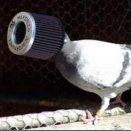Diy Compression Testing Qn
Announcements
-
Similar Content
-
Latest Posts
-
Just be warned that that turbo will not be a direct re-fit to the car. The exhaust housing is, of course, in the same place. It has to be - it's bolted to the exhaust manifold. So the dump will fit up. But the centre housing is not as long, so the comp housing will move backwards. This will affect both the turbo inlet and the outlet. There is fab work that needs to be done. Yes. it has one, it should have one. Paper gasket.
-
By PotatoCake · Posted
I only recently purchased the vehicle, it came with the flex setup but the current tune is e85 only, which is why im wanting to get the tune redone to enable a mixture. First i need to get the exhaust redone tho. I was thinking of getting a varex muffler but it sems they dont fit well in the 33 (hang low because of the valve mechanism which sticks out on top) and generally dont sound good. So that leaves me with redoing the entire exhaust (more resonators and mufflers) so its not a menace when i come and go from home, and then have the aes dump valve somewhere along the line to really open it up. I was thinking of having it before the cat but after seeing how insanely loud it will be (on a vl turbo) im thinking of putting it more towards the rear of the car, after one of the resonators. -
By pacman_1219 · Posted
At this point I'm just 'hoping' it's the turbo seals. I did speak to someone who said it's normal for these turbos to have a bit of axial play? Not gonna lie I've never checked a turbo for axial play before but you could hear it tapping a bit as I moved it back and forth. Surely that's too much? My theory is (could be completely wrong), bad axial play, worn bearings, bad seals, oil into dump/compressor side, burns in exhaust = blue smoke. On a timing belt related note, my crank pulley was missing that front plate that sits in front of the timing belt. It's that metal round plate. It did have the rear one, and the woodruff keys are in the crank which was nice. Can anyone confirm if the NEO det engine has a front plate, im sure it would to protect the front of the timing belt or something. Water pumps...the pump I got was an NPW (yes grill me if I should've got a genuine one lol). It has a smooth mating surface, kit came with a pretty pathetic looking paper gasket. Do I need to use any RTV or just trust the gasket will work because its a smooth mating surface? Cheers legends have a good Easter break! -
By pacman_1219 · Posted
Cheers man, I thought the same. Bit of an update on it all. It was definitely blue smoke, not grey after all. It didn't really smell oily but it was blue after all. Also puffing just the smallest amount on idle with no throttle. I ended up pulling the intake and exhaust off and there was around 3mm of axial play on the turbo shaft. So I figured we'll that's buggered and sent it off to get hi-flowed at hypergear. Haven't got it back yet. I haven't compression tested it yet. Had a look in the cylinder and cylinder 1 spark plug, looked a bit sooty but not oily. Then I've just started doing my timing belt because it's age is unknown. -
In that case it is probably stock. It lives in the navigator side footwell behind the plastic trim just in front of the a pillar.
-





Recommended Posts
Create an account or sign in to comment
You need to be a member in order to leave a comment
Create an account
Sign up for a new account in our community. It's easy!
Register a new accountSign in
Already have an account? Sign in here.
Sign In Now